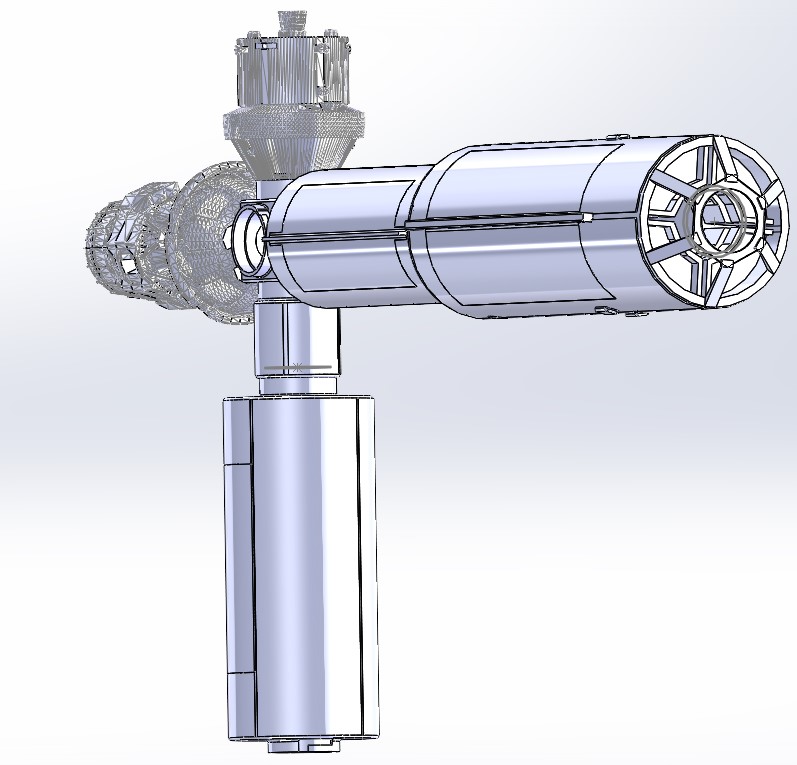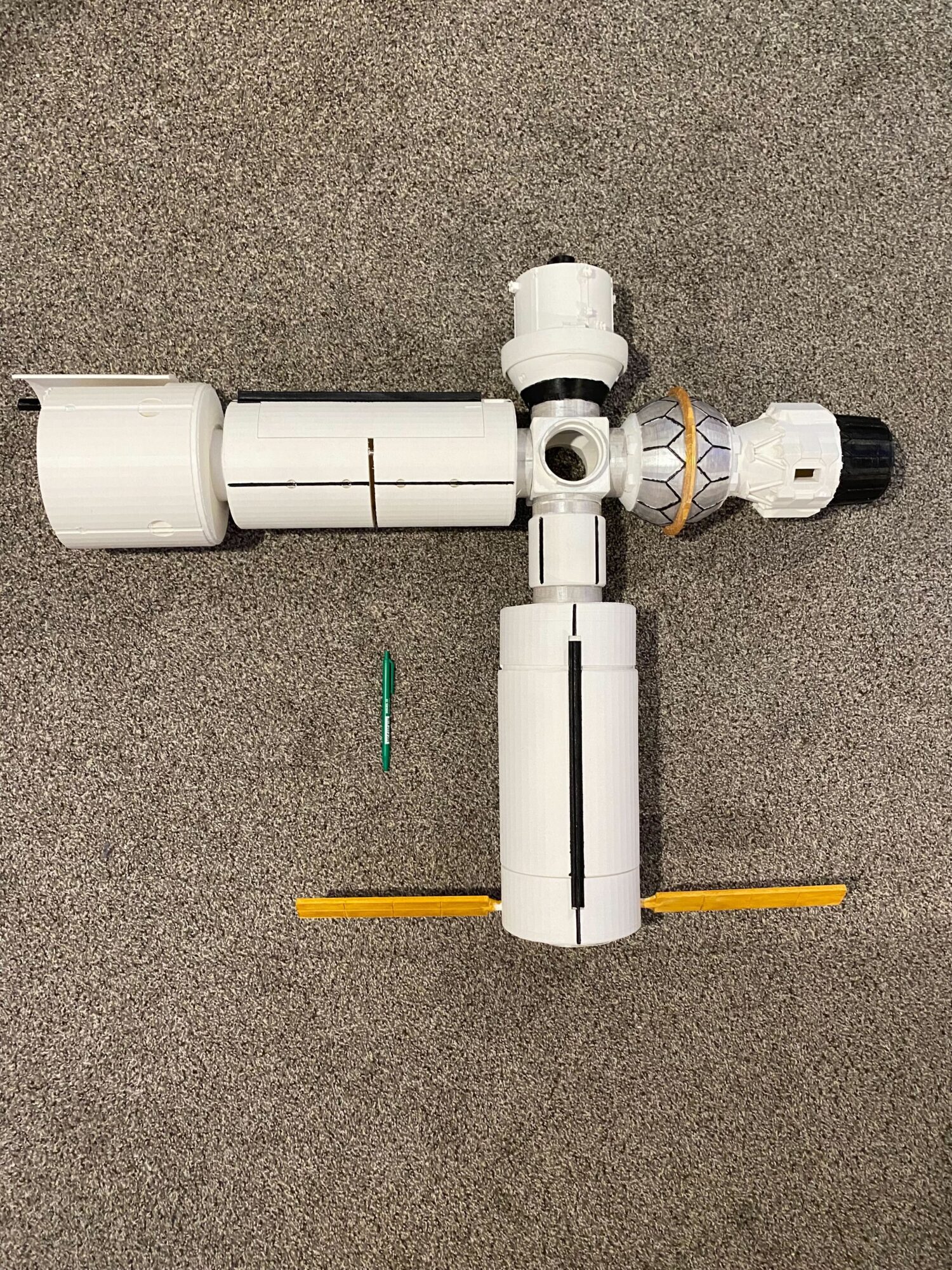Inspiration
To say my life revolves around space exploration is probably a bit dramatic, but I will say that a huge portion of my favorite things to discuss, think about, and even my career path involve space exploration. To me, it just seems like the natural progression of humanity’s journey: we have catalogued pretty much every square inch of Earth and we just keep growing as a species, now it’s time to explore space. It is pretty cliche, but I totally empathize with the phrase ‘Born too late to explore the world, born too early to explore the stars’. But thankfully, it seems we are currently living on the very cusp of that space exploration, and I just live for that.
So, for my project I knew I wanted to do something along the lines of space travel, specifically future space travel, but not so future that it’s unrecognizable. I think what really engages me with space is the ‘how’ of getting there, and how it literally pushes the boundaries of human knowledge while simultaneously having to remain very human and intuitive. This conjecture is where I wanted to base my project, something that at first glance is technically advanced, but closer inspection reveals familiarity.
Space exploration design adheres to the aesthetic of practicality, one prime example that pins down practicality is the widespread invention of touch screen technology, but it’s extremely rare inclusion in aerospace hardware. While modern touch screens aren’t prone to failure, astronauts still prefer the reliability and tactility of dials, knobs, and switches to ensure mission success. That practicality shows up in nearly every aspect of aerospace design: visually exposed valves, pipes, fasteners, belts, plating, etc.

https://conceptartworld.com/inspiration/astronaut-concept-art-and-illustration
But while practicality is a huge driving factor behind space design, it doesn’t appear completely utilitarian; you know space exploration when you see it. There is a certain implicit stylization to all of it, demarcated by a color palette of whites, reds, oranges, yellows, golds, blues and blacks. While many will be quick to point out that most of these colors actually do serve a purpose, such as that white reflects the most heat from the sun off the object, why not choose bright neon pink as indicator for an important switch? Certainly its more visible than red; therefore I conclude that style does indeed play some role in space design.

https://www.behance.net/gallery/89704689/NASA-Artemis-Concept-Art-and-Style-Frame
In recent memory, one piece of media that comes to mind in embodying this space exploration aesthetic is the video game Starfield. Starfield takes place in the far but not distant future, around 300 years, and lets players explore the Milky Way Galaxy. Exploration is done via spaceships flying around solar systems and on-foot to explore planetary surfaces. The game has coined the term ‘NASA Punk’ to describe the very tactile, industrial, and practical aesthetic much of the design follows, and very heavily takes inspiration from modern spacecraft. All the machinery, hardware, tools and systems are visually recognizable on spaceships and spacesuits alike, just like today. While I am not a fan of the term NASA Punk as it seems that every discernable aesthetic has the term punk slapped onto it, this is precisely the aesthetic I am shooting for in my project.

https://www.nme.com/news/gaming-news/starfield-developers-share-details-on-the-games-nasa-punk-style-3165130
Specifically, my final project is a scale model of a potential long transit spaceship (think flight to Mars and beyond). Currently there are no existing designs for a spaceship of this kind and size, and I have always wondered what they will look like, so I decided to do it myself! One of the alluring aspects of the spaceflight design that I cherish is its grounding in reality, so I am trying to stay away from science-fiction technology as much as possible, and stick to existing or very near future technology.

https://modelermagic.com/henri-2-0-a-science-fiction-short-film-by-eli-sas
My plans were to not only design the outside of the spaceship, but also create a low-resolution mockup of the inside of the vehicle and be able to take off the ‘roof’ to see inside. Additionally, I wanted the separate modules able to be attached and detached freely, as that is actually how real spacecraft like the ISS is built. In keeping with the realism, I did a fair bit of research into what systems and contents are present on a spaceship and included those in the design. At CU I have learned a great deal about human spaceflight; for this project I took everything I have learned and poured it into a physical artifact.
Initial Design
The contents of the research I did could fill an entire paper on it’s own already, but summarized, humans need life support systems, basic needs like water, food, and waste, energy,power, and propulsion, transportation to and from the spacecraft since it can’t land itself, lots of storage, laboratories to conduct science, workshops to fix problems, and potentially most importantly a place to live and relax! These necessities are contained within five modules that makeup the combined spacecraft. Propulsion Power and Energy (PPE), Orion (the next space capsule to be used in upcoming NASA missions), Laboratory and Workshop (LAW), [Resupply and Logistics for Interplanetary Exploration (RALPHIE), Crew Habitat for Interplanetary Program Spacecraft (CHIPS), and an Airlock to connect at a junction.

Overall vehicle sketch exterior view



(From left to Right) LAW, RALPHIE, and CHIPS module floorplans
Shortly after making these hand sketches, I realized I needed to way to be able measure the physical dimensions of my ideas, in order to know how to spatially organize the individual modules and their interior contents. I decided to first design this as a life-sized system for sake of simplicity, and then apply a scale later on when I am ready to CAD. I first attempted to re-sketch the design on graph paper, and try assigning a scale based on the size of each square: very tricky to maintain consistency. I then remade the above sketches in a very large google drawing, and used a ruler tool to figure out the size.

Remade overall exterior assembly view

Interior view of one of the CHIPS module
With these dimensions established, I was finally able to start modeling the design in solidworks, first modeling individual modules and then combining them in a digital assembly. One of the perks of 3D printing is the ability to autonomously produce an object, freeing up time to work on other things. This allowed me to literally do two things at once, meaning I could gain back time on this very large project by designing something, immediately 3D printing it and getting back to design in the meantime.

Solidworks assembly of the Scale Model Spacecraft
At the current time of writing this, the interior of the project is not complete and only the exterior is complete. I was faced with the decision to either entirely design inside and outside of each module one at a time, or completely design the outside and then focus on the inside. I opted for the latter due to the lengthy setup times involved with starting and cooling prints: on longer, larger prints less of the time is spent with me actually active at the printer, that valuable time I used to continue CAD’ing. Unfortunately there were multiple weather incidents in Boulder over the last few months that resulted in both power outages. This is EXTREMELY bad for 3D printing as if a 3D printer is interrupted mid-print, there is no way to pick up where it last left off, both the time and material is wasted. So even rolling brown-outs severely interrupted my progress, and I am behind where I planned to be in terms of project completion. That being said, I plan to keep chugging along and have the project more finalized for the Aesthetics Design expo on May 8.
Acknowledgements
With a project this huge, I needed every ounce of help I could get. While the large majority of the project is till completely custom, I was fortunately able to adapt existing designs from other artists into my own project to give myself back time on some of the trickier parts. A prime example of this is the Orion crew transport module, this is the tiny conical looking module with tiny boosters coming off of it. This is a real life piece of space technology recently developed by NASA and other subcontracted companies, and is integral to the current Artemis space program. I was able to find an existing CAD file on the internet that was first an extremely high resolution life size digital replica produced by NASA, and then scaled down for ease of 3D printing by another artist. I then downloaded that file from the artist, and modified it extensively to be viable for my project: hollowing out the inside, adding an interface so that it can be detachable, adding accessory ports and more.
Credit for the original designs of the pieces belongs completely to the artists, I merely adapted their designs to play a part in my project.
Orion Crew Capsule:
- Lockheed Martin and National Aeronautics and Space Administration, and the thousands of engineers and scientists responsible for the project (Original CAD file)
- Diego Garcia from Eugene Oregon, DeltaXF on Thingiverse.com (Scaled down CAD file) https://www.thingiverse.com/thing:5383140
PPE:
- John Brown from the United Kingdom, Silestis on Thingiverse.com, Starfield Repsitories, https://www.thingiverse.com/thing:6328210, https://www.thingiverse.com/thing:6373015


2 Comments. Leave new
Barrett,
This project is impressive in every aspect. I hope that you are not dissapointed in pulling back the scope, as it is still, for lack of a better word, gynormous!
I think you absolutely hit this project out of the park in terms of your goals. It looks awesome, and the aesthetic was nailed. Although the spaceship colors can seem a bit boring at times, that’s exactly how NASA Pragmatism goes! I am in awe and your project inspires me to think more deeply about what I am interested in, and how I can reflect that in the aesthteic of the art pieces around my home.
Only question I have is: what is your favorite aerospace movie?
Cheers my good friend. This project is cool, and it represents your awesomeness well.
Barrett,
Anyone who glances at this post can tell the passion and time you are pouring into this project. I cant wait to see the final product that you have (lucky me I got a bit of a sneak peek). Also love the names you have for the different modules. Have there been any other set backs besides the power outages, such as tolerancing as you put it together?